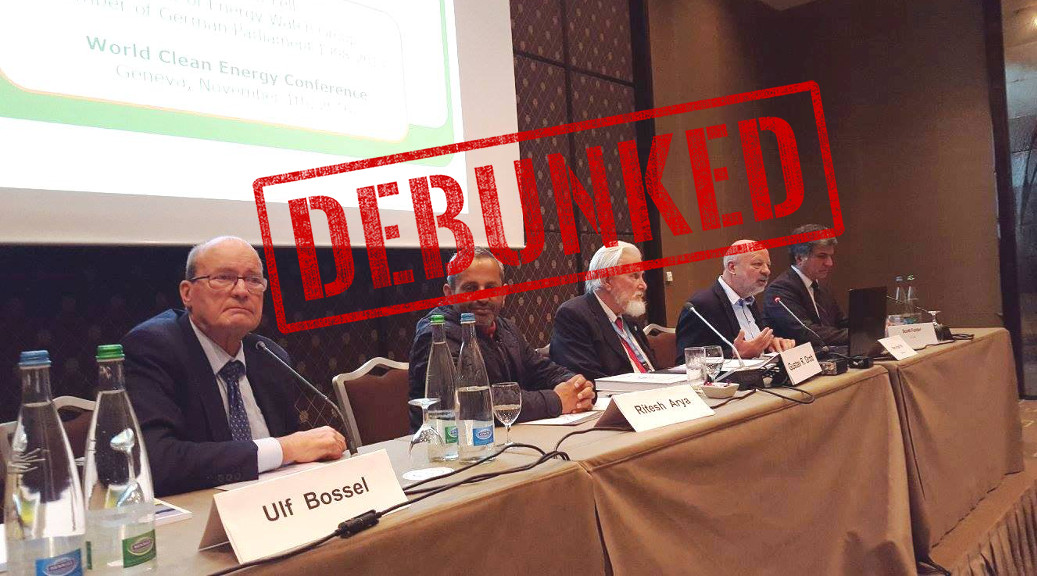Tag: Natural Gas
-

Zero Emission Ammonia Production from Green Hydrogen
RMP’s new post about Zero Emission Ammonia Production from Green Hydrogen examines where we are in August 2020 with regard to scaling production of green hydrogen for green ammonia. Green Ammonia pilot projects are ongoing around the world but in this post, we examine why Australia is the world leader in green ammonia & how…
-

Debunking Dr. Bossel’s Anti-Hydrogen Thesis
In this post RMP debunks Dr. Ulf Bossel’s anti-hydrogen thesis that has been propagated for years and was even published as recent as October 26, 2017 by Electrek. Dr. Bossel’s thesis says that making hydrogen is wasteful but ironically terawatt hours of electricity are being curtailed or wasted because we are not using that energy…
-

Michigan Oil & Gas Monthly – October 2016
In the October 2016 MOGM we look again at the issue of putting Antrim Shale Wells on a vacuum system. We look at the numbers, like always, and we end with some final thoughts on how the word “fracking” has ironically set back environmental protection.
-

2016 Michigan Hydrocarbon Production Results January – June
At this point in October of 2016, all the reporting through the first six months of 2016 is complete. RMP has again downloaded, parsed, and analyzed the Michigan hydrocarbon production data for the Michigan Basin. Click through to check out our reporting and graphical analysis of Michigan Basin production. This post’s cover photo was taken…
-

Michigan Oil & Gas Monthly – April 2016
In the April 2016 edition of MOGM, we look at the rise of natural gas market share and also the rise of natural gas prices. Natural gas is poised to make a big comeback in 2016 and the USA is poised to benefit from this more than any other country. The USA is the #1…
-

Michigan Oil & Gas Production Report January – December 2015
The 2015 full year petroleum production numbers are, according to RMP estimates, 98% reported. That means it’s time to review a whole host of tables and graphs showing you the top hydrocarbon producers in the Michigan Basin for 2015. Check out this annual production summary to see what got produced and where in Michigan. Also,…
-

Landfill #27 At Wurtsmith Air Force Base
Check out our interactive map of ground water contamination at the former Wurtsmith Air Force Base in Oscoda, Michigan. RMP considers Wurtsmith on our top 10 list of environmentally contaminated hot spots in the Michigan Basin. Perfluorinated compounds (PFCs) in fish surrounding WAFB were so high that Michigan Department of Community Health issued fish advisories…
-

Michigan Oil & Gas Monthly – February 2016
Check out the February “follow-up” edition of RMP’s Michigan Oil & Gas Monthly magazine. This month we revisit the Word of Faith 16-27 application for an oil well in the City of Southfield. Thousands of comments have been received and made public by the MDEQ. This month we take a closer look at public sentiment…
-

Michigan Oil & Gas Monthly – August 2015
In the August 2015 MOGM, we take a look at the possibility of operating Antrim gas wells on a vacuum. We also talk about natural gas and synthetic natural gas. Natural gas is a part of our environment and always will be as long as there are living things.
-

Cheniere – The First U.S. Company To Export Natural Gas (LNG)
When FERC approved Cheniere to be the first licensed exporter of LNG in the USA, everyone took notice, including RMP. Now, 4 years later, Cheniere is about to start shipping LNG to customers in the UK, Spain, Korea, and India. Contracts have also been inked with companies in France for trains that come online in…